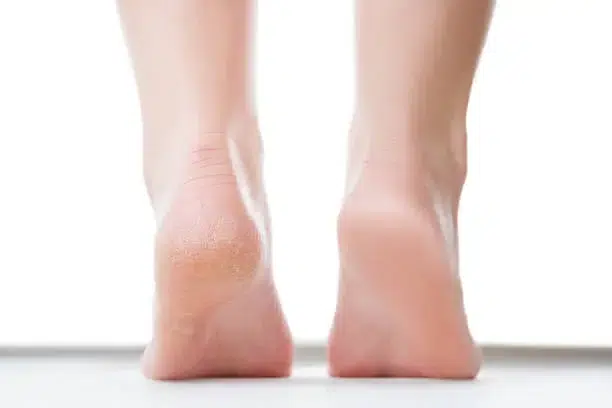
People view Vaseline as a brand-name product because of the many items it offers. For example, It has a wide range of product uses, such as skin resurfacing after surgery. Vaseline isn’t just for dry skin – see how it helps cuts heal!. Must read it for your dry skin.
“Wondering if Vaseline can help heal your cuts? Discover 3 essential facts about how petroleum jelly protects wounds, locks in moisture, and speeds up recovery for minor injuries.”
This issue has raised controversies among skin care fans, specialists, and even laypeople. To decisively determine whether it is more helpful than detrimental in the wound care process, one has to appreciate its pros and cons in wound care. Can Vaseline Heal Cuts 3 best fact Pertrolium jelly brand products are included in the list of companies that have specialised in skin care, including treatment and healing of skin wounds.
It is composed of oil and wax; more specifically, it is a castor oil solution in a gel matrix. The term Vaseline is used to describe a type of petroleum jelly made by refining oil into gasoline.Many people wonder whether it is safe for wound healing, especially when applied to facial cuts and scrapes. If you’re curious about its effects on facial skin, check out this detailed guide on using Vaseline for the face.
By definition, petroleum jelly does not fight off bacteria or restore the skin like ointments do. Instead, it works at a much slower pace by first covering the area with an occlusive layer. This strategy helps in healing by trapping moisture in the body and maintaining it long enough.
According to professionals, It does not only heals and improves bruised areas but also seals moisture. When emollients are applied to scrapes and cuts, the healing process is simplified. Facts on Healing: Healing at this point may be broken down into four primary phases, of which the first is hemostasis, which is the cessation of blood flow, and respiration, and blood begins pooling in the wound. Following this is inflammation, where the white blood cells try to strengthen the area from infections.https://beautyandselfboosting-f0201d.ingress-comporellon.ewp.live/5-best-vaseline-lip-care-remedy/

Which leads us to the third phase of proliferation. During the final step, known as ‘Tissue Repair,’ granulation is replaced with collagen and elastin, followed by a phase where the skin is reinforced. Healed spongy tissues and the stump-like tissues around the spongy tissue do not dry out easily. Helpful tiny blood vessels heal regions with ideal circulation. The use and rehabilitative use of Vaseline on wounds
Petrollium jelly aids in the retention of moisture and just like other types of jelly, if properly applied on the skin, the area will be moisturized without cuts or scabs.
When new tissues coalesce, they build fresh layers. A scab serves as a protective cover.
New tissue formation greatly impedes the healing process. Vaseline jelly keeps skin moist, encouraging healing.
Applying soap and water to wash the wound is vital so that no complications arise during treatment; it also serves as a prerequisite to using Vaseline. Many people question whether Vaseline is suitable for wound healing, particularly on facial cuts and scrapes. To learn more about its effects on facial skin, check out this.detailed guide on using Vaseline for the face.
Vaseline can help aid the healing process regardless of the injury, big or small, scraped or cut.
Even if it lacks the medicinal benefit of nurturing the skin like the others, it guarantees protection from infection while the injury heals by keeping it moist.
It is important that you do use soap and wash before this step so that the dirt or any bacteria that may infect the area are cleaned.
Can Vaseline Heal Cuts 3 best facts Most dermatologists and family practitioners specialising in skin recommend applying Vaseline on any cut or scrape wounds.
Petroleum jelly application has been modernised by the American Academy of Dermatology who now recommend its use for cleaning wounds due to its capability of being soothing to the skin during the healing process.
After conducting some research, they found that the jelly leads to quicker healing of the skin underneath as compared to having it exposed.
The skin barrier constructed by this substance allows the skin to regenerate efficiently by improving moisture content.
It must be noted, however, that an open infected wound or a wound at risk of infection is out of the scope of treatment with Vaseline and Petroleum jelly, as the use in those cases would be detrimental.
Medical attention should immediately be sought when other indicators, such as redness, pus, deep burns, fever, or swelling in certain areas, begin appearing.
Instead of aiding with wound healing, Vaseline will help with moisturising, which is useful in guarding against scar tissue that may inhibit healing. Vaseline will further help in the natural vascular healing processes. To promote maximum healing benefits, clean wounds require Vaseline and normal hygiene should be practised.
Along with minimum treatment of superficial cuts and scrapes, beyond what is Vaseline, infected or complicated wounds need additional forms of medical treatment.
Understanding the proper application and timing of Vaseline usage increases the healing rate of wounds. Using Vaseline on facial wounds is a common practice, but is it really safe? Discover its effects on facial skin by exploring the benefit of vaseline for skincare
Yes, Vaseline helps keep wounds moist, preventing scabs and reducing scar formation. However, it does not contain antibacterial properties, so wounds should be cleaned properly before application.
To speed up healing, keep the wound clean, apply Vaseline or a suitable ointment to maintain moisture, and cover it with a bandage. Eating nutrient-rich foods like vitamin C and protein also promotes faster recovery.skin care petroleum jelly
You should continue applying Vaseline until the wound has completely healed and no longer looks dry or scabbed. If irritation or infection occurs, stop using it and consult a doctor.
While Vaseline does not directly heal scars, it helps minimize their appearance by keeping the skin hydrated and preventing excessive scabbing, which can lead to more noticeable scars.
Natural remedies like honey, aloe vera, and coconut oil have antimicrobial properties that aid in faster healing. Keeping the wound moist and eating nutrient-rich foods can also help.
It is best to keep the wound covered until new skin has formed. Small cuts can be left uncovered after a few days, but larger wounds should remain covered until fully healed.
Yes, applying Vaseline on facial wounds can help prevent scabs and reduce scarring. However, ensure the wound is clean before applying it to avoid trapping bacteria.
Wounds heal faster when kept covered and moist. A moist environment promotes cell regeneration and reduces the chances of scarring.
Vaseline helps repair damaged skin by locking in moisture and protecting it from external elements, but it does not regenerate skin cells or treat deep wounds.
A healing wound will show signs like reduced redness, scabbing, less pain, and the formation of new skin. If swelling, pus, or increasing pain occurs, it may indicate an infection.
https://www.healthline.com/health/beauty-skin-care/petroleum-jelly
No comments yet. Be the first to comment!
You must be logged in to post a comment.

Recent Comments